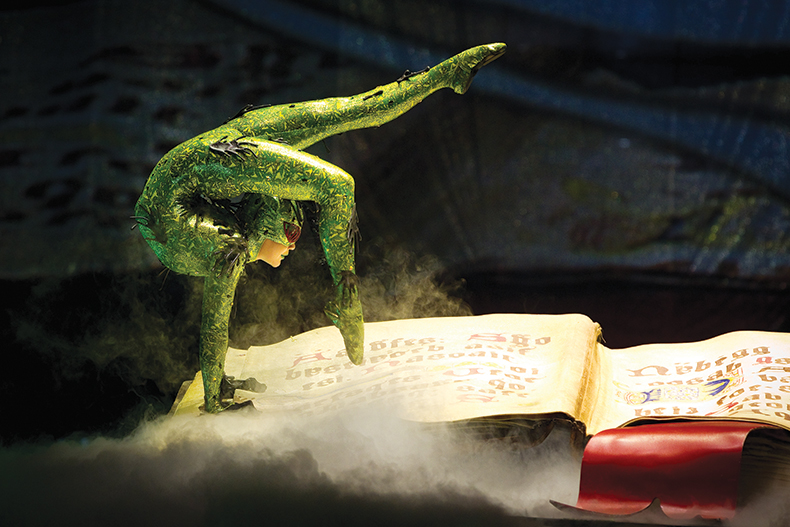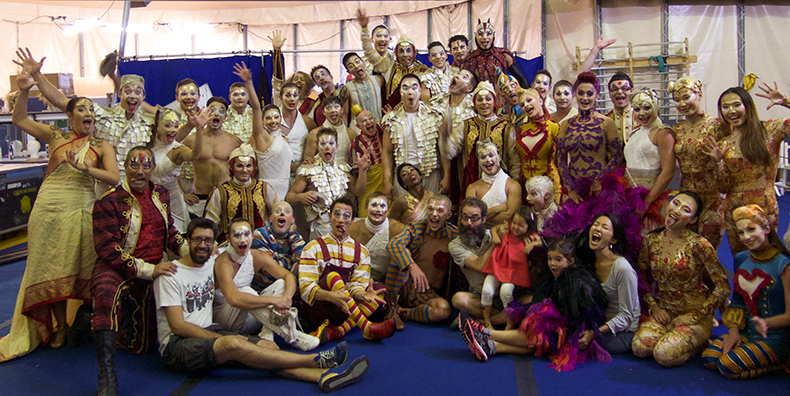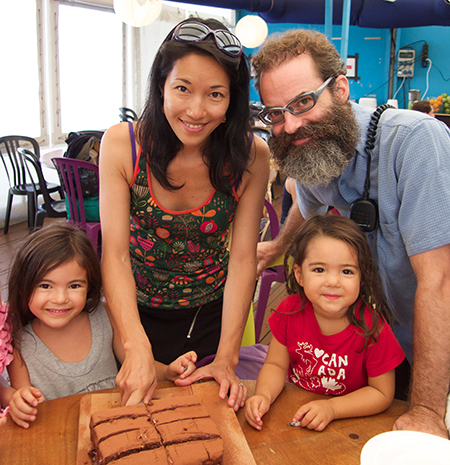
UAlberta physical therapy alumnus takes his skills on the road during a 14-year globe-hopping adventure as a physiotherapist for Cirque du Soleil. (Photo: OSA Images)
(Edmonton) The ink was barely dry on his physical therapy degree when Gerald Gosselin decided he needed a way to put his skills to use and see the world at the same time. So he did the most obvious thing, and joined a circus.
Gosselin, '99 MScPT, had been working in a sports medicine clinic pondering his future when he saw a job posting for a physiotherapist with the grand spectacle of travelling circuses, Cirque du Soleil. He'd never seen a show and knew nothing about the circus arts, but applied anyway. Two weeks later, he was backstage in Montreal, marvelling at the extravaganza and finding himself face-to-face with artists in full makeup, giant wigs and feathered bird costumes who wanted to know why their knee clicked a certain way.
"I couldn't take anybody seriously," Gosselin remembers. "I had a big smile on my face, not just for the amazement of actually being there, thinking, is this really happening? Is this reality? It was really surreal."
After a brief orientation in Quebec, Gosselin jetted across the world to Auckland, New Zealand, one of two physiotherapists charged with overseeing the musculoskeletal health of the 50 to 70 artists on a tour of about 150 total staffers.
"It's a huge operation," says Gosselin. On any given day in the performers tent he'd hear a dozen or more languages, reflective of the blend of cultures, backgrounds and demographics that are part of a successful show.
"It's a real cross-cultural mix of people, a microcosm of society."
Working with high-performance athletes
Day-to-day, Gosselin maintained a travelling physiotherapy clinic, treated injured artists, scheduled their medical appointments and tests, and worked with the stage manager to determine who was in and out of the performance lineup due to injury.
The artists he worked with were "phenomenal athletes," Gosselin says, many of them former Olympians and champion gymnasts from eastern Europe. Some had spent decades training in specific ways, and as a result had their own views on how to best prepare, says Kosta Zakharenko, a former World Championship silver medallist in acrobatic gymnastics who spent 10 years touring with Cirque.
"I hadn't heard of pilates before Gerald, and at first didn't like it because they made me do all the work. I just wanted to lie down and let them fix me," he laughs. "That was a learning curve for everybody."
But Gosselin's professionalism and expertise quickly won over Zakharenko, and the two became good friends. Gosselin's thoroughness helped him not only recover physically from injury, but mentally as well.
"He would spend time with me and explain exactly what injury I had, why it happened, what types of exercises I needed, what routines I could still do," Zakharenko says. "If it hurts, you're afraid to do anything and make it worse, so the extra time was definitely helpful."
On a Cirque tour, where artists are performing the same movement 10 shows a week plus training time, injuries are unavoidable, says Gosselin, equating the physical toll of repetition to working on an assembly line.
"When you're doing the same movements over and over again, you end up with muscle imbalances and that can lead to chronic injuries."
The family circus
When Gosselin joined Cirque at the age of 25, he didn't expect to be on the road long, maybe a year. But one year stretched to two and then three and before you know it, 14 years passed and he'd travelled to every continent on the globe except Antarctica. In that span, Gosselin married a Cirque colleague, acupuncturist Yoko Masuda, and they had two children, Mio and Hana.
The family continued on the road for four years, with the girls getting to enjoy all the usual things kids do, such as music or ballet lessons, but did them in places like Vienna or wherever their schedule allowed.
"Once you get into it, you don't think about not having a base. Your base is where you are," Gosselin explains.
As the kids grew older and approached school age, the family decided it was time for a change. In September 2014 they moved to Edmonton, Gosselin's hometown, where Masuda has set up a clinic and the children are enrolled in school.
Gosselin hasn't decided his next move. A recent 15-year reunion with his U of A classmates brought together colleagues working in a variety of roles and locations-private clinics, small towns, as administrators, hospital staff-only reinforcing that his options abound.
For now, Gosselin is acclimatizing to being in one place and enjoying Edmonton's newfound energy and vibe.
One thing is certain, the family will travel again. Moving all the time came with a rhythm, like a "season change," and it's only a matter of time before they get that 'I need to move feeling,' he says.
"Three months back and already I'm feeling that."
A version of this story originally appeared in Rehab Impact report 2013-14.
">

